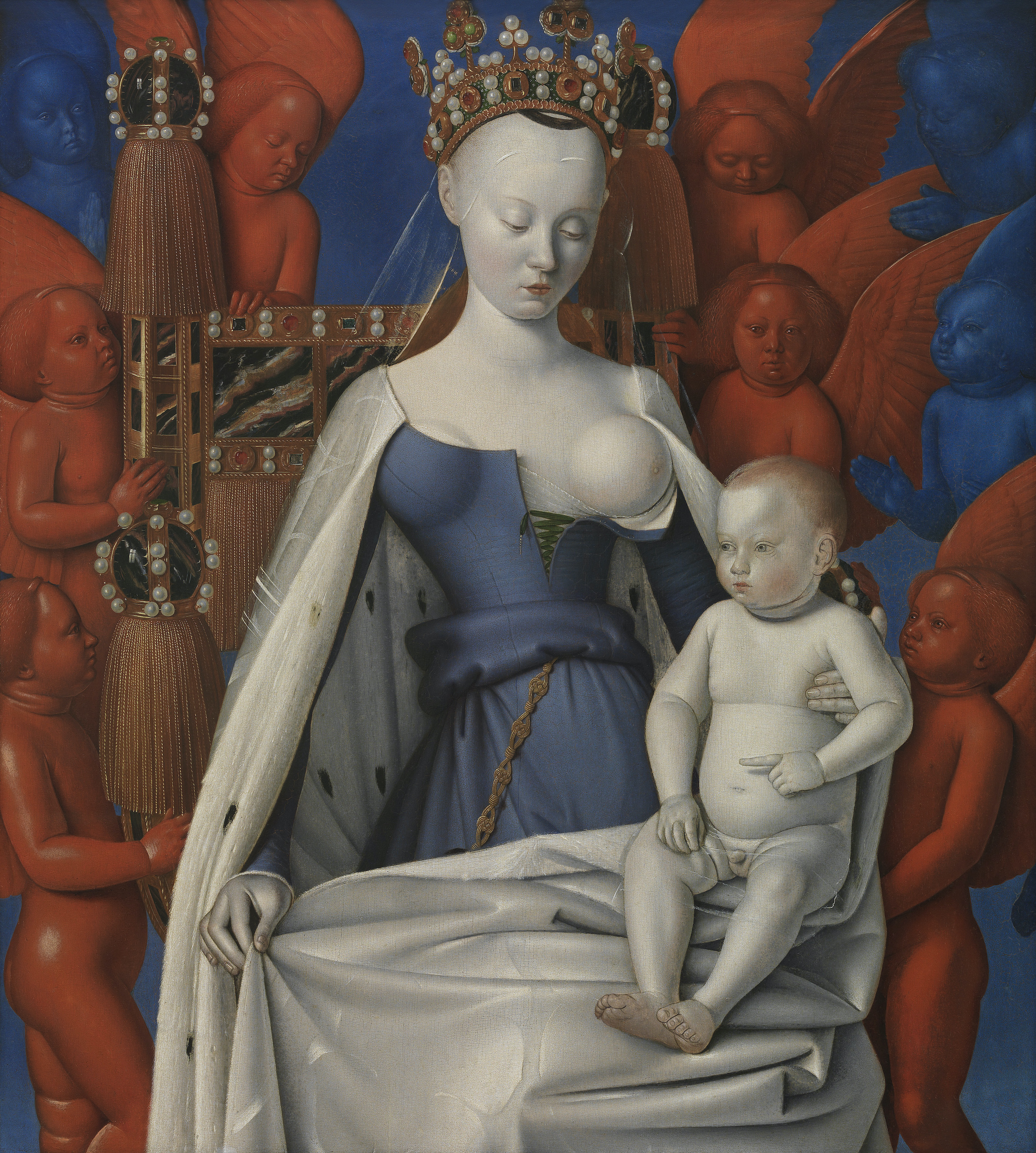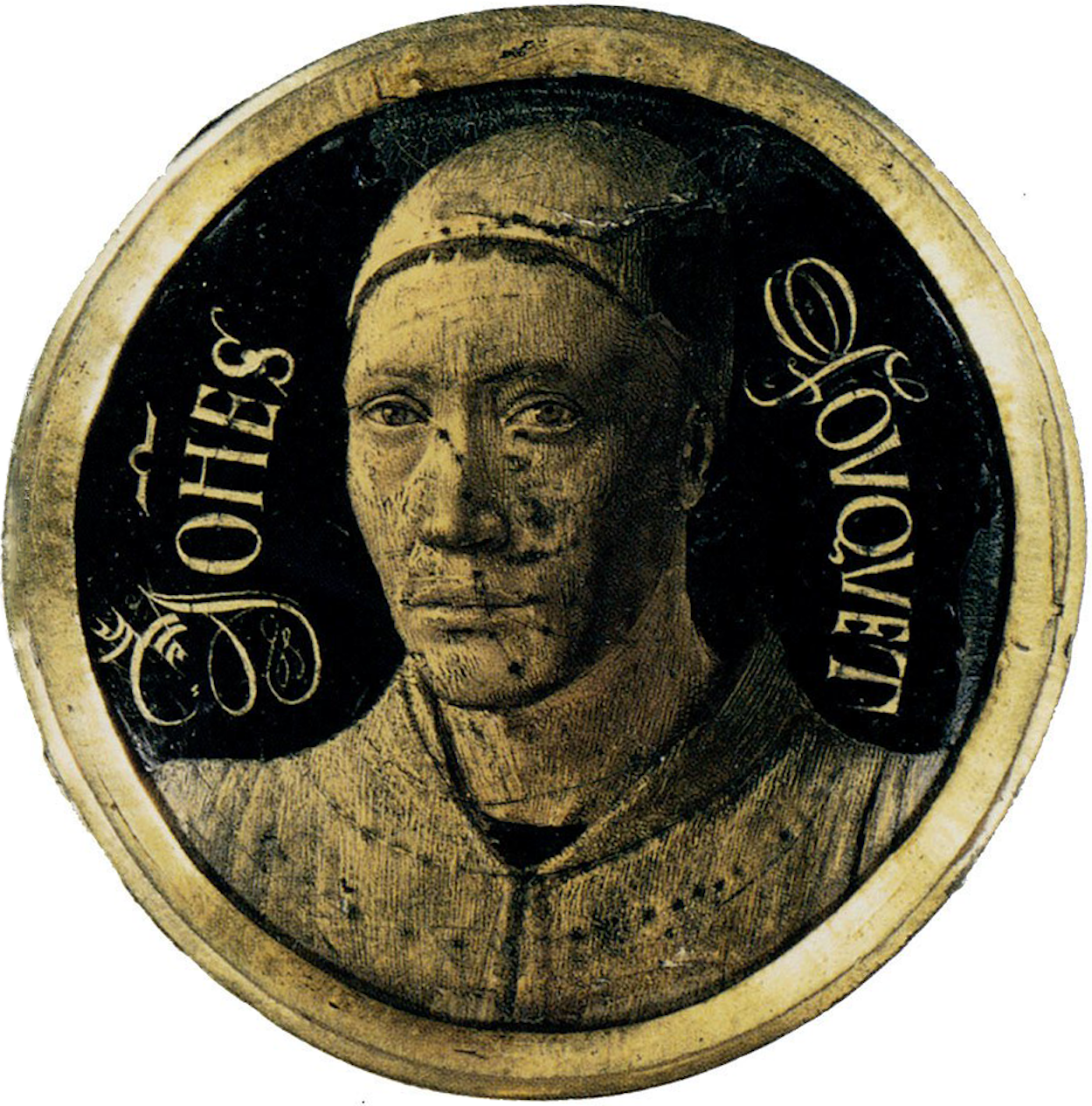This intriguing late-medieval masterpiece is the absolute highlight of the KMSKA’s collection. Jean Fouquet’s Madonna Surrounded by Seraphim and Cherubim looks remarkably modern. Yet the French court painter Jean Fouquet painted it in the middle of the 15th century. Fouquet presents the Virgin Mary as the Queen of Heaven, the exalted mother of God. The unusual, intense use of color and bold representation make the painting fascinating.
Mary sits on her throne, stiff and still. Or is she actually standing? Nine angels throng around her. The three blue cherubim represent purity and air, the six red seraphim love and fire. Mary is dressed in the aristocratic style of the 15th century. Her cloak and crown emphasize her eminence. The cinched waist accentuates her full, bare breast, which lends an almost erotic touch to the painting. Agnès Sorel was probably the model for the Madonna. The mistress and counsellor of Charles VII was both famous and notorious for her beauty. As the breast-feeding Madonna, Sorel was able to embody the prevailing ideal of beauty.
Fouquet broke with tradition to paint the Madonna as a sensual and fashionable woman. Characteristic features are the glassy detachment and absent gaze he gave his figures. The child on her lap seems totally uninterested in her breast, and Mary is not really encouraging him to suckle. The Christ Child is focusing on something else. He points towards the other wing of the diptych—more specifically to the artist’s patron, Etienne Chevalier. As if saying to his mother: "That man deserves a place in heaven. Will you put in a good word for him?"
We present today's AMAZING painting thanks to the Royal Museum of Fine Arts in Antwerp (KMSKA).
P.S. There are endless Madonna paintings throughout art history. See how very different they can be in just these few examples: Giotto, Fra Filippo Lippi, Edvard Munch, and Salvador Dalí.


 Jean Fouquet
Jean Fouquet